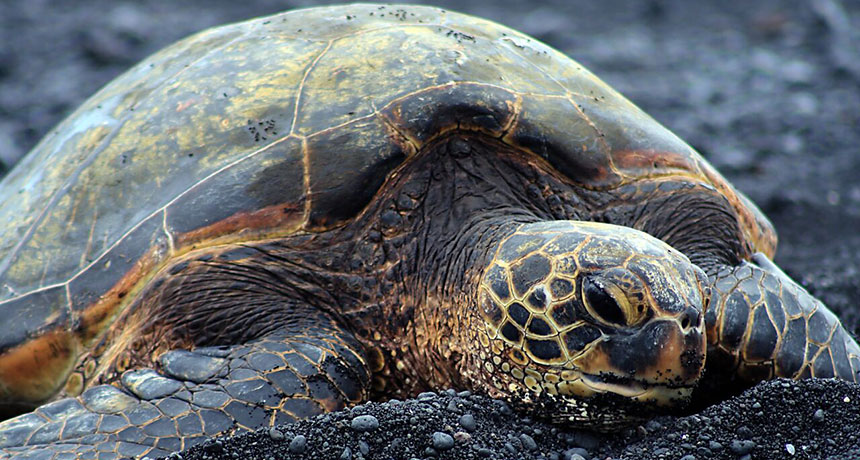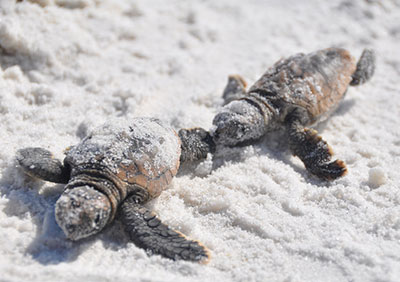How to see sea turtles — without bothering them

Sea turtles haul out onto beaches to lay their eggs, providing a great opportunity for viewing the marine reptiles. But careless tourists can be a problem.
syntheticaperture/Flickr (CC-BY 2.0)
- More than 2 years ago
Olive ridley sea turtles nest on remote Ostional Beach in Costa Rica from August to October each year. Normally, the turtles don’t have to worry too much about people. Their nesting time coincides with the country’s rainy season, which floods the Nosara River and cuts off most beach access.
But this year, El Niño has brought drier weather that opened the beach up to people curious to see sea turtles up close — too many people. During the first weekend of September, families flocked to the beach, sometimes posing children on the large reptiles. With such a poor welcome, most turtles just turned around and left.
Seeing animals in the their natural habitat is a wonderful experience. But when humans and nature interact, there is usually an element of danger — if not for us, then for the animals. As well-meaning as we might be, we can hurt them. And for species such as sea turtles, which are all considered critically endangered, endangered or vulnerable by the IUCN, too much love can have dire consequences.
In Costa Rica, officials have promised that by the time the turtles return next month, they will double the animals’ security, only allow in groups with guides and confine people to the edges of the nesting area. But this isn’t the only place in the world where you can see sea turtles. So how can you avoid harming these amazing creatures and still have a great experience?

There are lots of places where you might encounter a sea turtle outside of a scheduled tour. Five species, for instance, nest along the Cape Hatteras National Seashore in North Carolina. It’s important to use proper sea turtle etiquette in such situations. After all, if you were a mom about to give birth, you’d probably ask everyone to be considerate of you, too. Here’s some general guidance:
- Stay out of the way, by at least 30 feet. Mama turtles are there for an important job. Let them do it unimpeded, both on the their way onto the beach and as they leave.
- Speak softly and move quietly. Loud noises bother turtles.
- Don’t use flash photography and turn off your flashlight when a turtle is near. Light can disorient a turtle.
- Leave your pet behind. Your dog doesn’t care about watching sea turtles nest, but the reptile might be bothered by the other animal.
- If you see a sea turtle on the beach outside of nesting season, call the authorities. It may be sick, injured or too cold — and in need of help, which should only be provided by experts.
- Watch out for baby turtles after they hatch. You don’t want to step on them. And leave them alone. The water may be far away for the tiny babies, but they’ll make it there just fine without any help.






